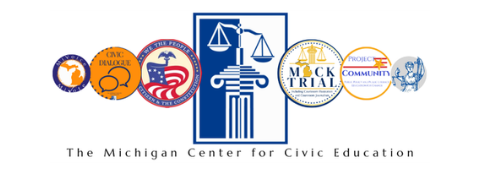This lesson encourages students to deliberate on the issue of cyber speech and the First Amendment. Through the use of court cases and school policy, students will be able to define student expression rights and then evaluate the necessity and constitutionality of censoring and reprimanding students’ online social networking behavior.
Civics Lessons
The Exchange: Should Students’ Cyber Speech Be Protected Under the First Amendment?
New Jersey v. T.L.O. (1985)
This case summary provides teachers with everything they need to teach about New Jersey v. T.L.O. (1985). It contains background information in the form of summaries and important vocabulary at three different reading levels, as well a review of relevant legal concepts, diagram of how the case moved through the court system, and summary of the decision. This resource also includes seven classroom-ready activities that teach about the case using interactive methods.
The Invaders: A Constitutional Rights Activity
Introduces students to the rights guaranteed in the U.S. Constitution.
We the People
Students recognize the different parts of the U.S. Constitution and conduct a close text reading to discover the meaning and significance of each part. Throughout the lesson, students will track the development of the Constitution from the original document and its articles to the amendments up through the 1992 edition of the Twenty-Seventh Amendment.
Orb and Effy Learn About Authority
Grade: K-1
This lesson introduces the study of authority. Children learn when people are exercising authority and when they are exercising power without authority. Children learn how and why authority is useful in society.
Judiciary Act of 1789
The purpose of this lesson is to teach students about the significance of the Judiciary Act of 1789 in establishing a federal judiciary, and the power of judicial review as outlined by the landmark U.S. Supreme Court Case, Marbury v. Madison (1803). By the conclusion of this lesson, students will understand the key provisions of the Judiciary Act of 1789 and the structure of the federal judiciary, as well as the power of judicial review.
Rules, Rules, Rules
This activity helps students understand the need for rules, the rule-making process, and the role of the student / citizen. The classroom constitution provides a foundation for understanding and reinforcing the principles and ideals which provide the framework for American democracy.
The Constitution in Today’s America
This lesson teaches students about the development and role of the Constitution of the United States. Students will learn about the relationship between the Constitution and a democratic government
This is Our Town Too: The Jury Process
In this lesson students learn about the process of voir dire and the use of peremptory challenges. Through the study of three actual Supreme Court cases, students gain background information for a classroom lesson.
What Makes a Court Supreme?
The purpose of this lesson is to help students understand the original purpose and
powers of the Supreme Court according to the Constitution. Students learn the Supreme Court’s role in preserving the U.S. Constitution and the balance of power it creates.

